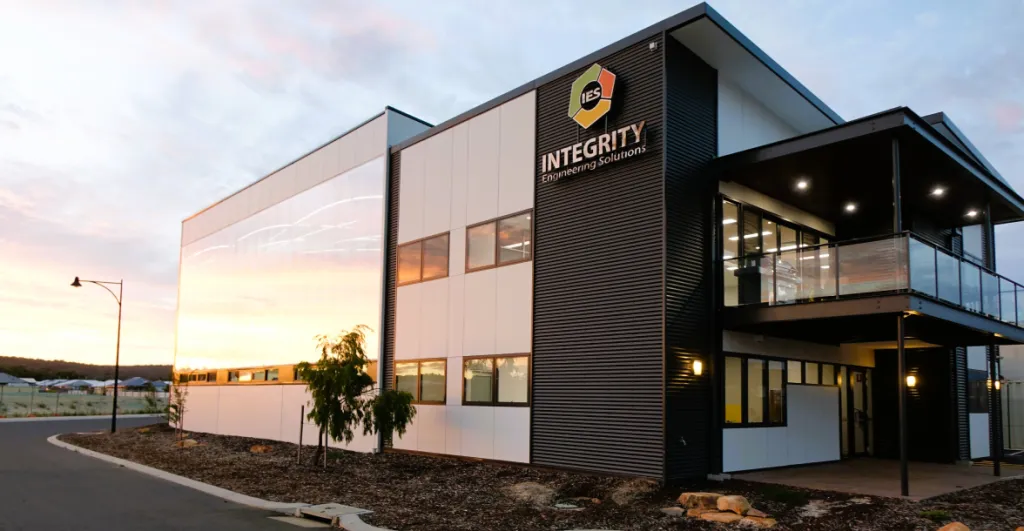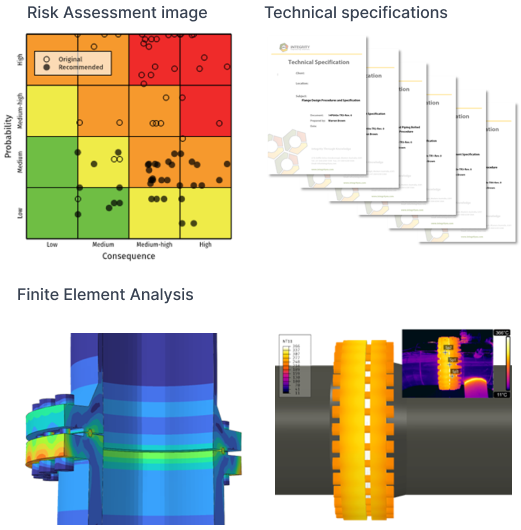A brief look at Integrity Engineering Solutions and their engineering capabilities.
Integrity Engineering Solutions (IES) was founded in 2010 by Dr Warren Brown and is a niche engineering consulting firm located in Western Australia and servicing both a local and overseas clientele in the area of fixed equipment integrity and reliability for Oil & Gas, Refining, Petrochemical, Pipeline, Mining and Renewable Energy industries. The engineers at IES revel in solving industry’s most difficult challenges, one of which is pressure boundary bolted joint leakage.

Integrity Engineering Solutions is a niche engineering consulting firm dedicated to applying advanced, practical knowledge to the solution of the most difficult engineering problems in the Oil & Gas, Refining, Petrochemical, Minerals Processing and Mining industries.
Our unique knowledge is in demand from a global client base and we pride ourselves in maintaining and developing cutting-edge engineering analysis techniques to ensure the integrity of our clients' fixed equipment.
IES has a focus on developing practical solutions and performs fundamental research and development if required. This work is usually executed as a Joint Industry Project, with industry partners providing input and guidance. IES are also heavily involved in industry codes and standards development, sitting on ASME and API committees for fixed equipment. In particular, Dr. Warren Brown is the current or past chair of the ASME SWG-BFJ (Bolted joint design for ASME Section VIII), ASME SC-FJA (ASME PCC-1 committee) and the PVRC Sealing Reliability Council.
Many of the advances in Pressure Boundary Bolted Joints over the past decade have been developed by the IES engineers, who collectively have over 100 peer reviewed publications in the field. These advances include:
- Efficient Assembly of Bolted Joints (2004) - Basis for modified assembly procedures in ASME PCC-1 Appendix F
- Effects of temperature on bolted joints outlined in WRC 510 (2006)
- Bolted Joint Nut Factor Testing (2007) - Basis for guidance in ASME PCC-1 Appendix
- Flange flatness and defect inspection limits listed in ASME PCC-1 Appendix D (2010)
- ASME-LLC project on the design of high temperature pressure boundary bolted joints (2010)
- Publication of guidance on the use of Turn-of-Nut for resolving leakage and start-up retorque, later incorporated into ASME PCC-1 (2011)
- Publication of ASME PCC-1 Appendix O and WRC 538 (2013) for determination of the optimal assembly bolt load
- Development of guidance for assessing bolted joint external loads (2013), later incorporated into ASME VIII Code Case 2901 and ASME VIII UG44(b)
- Identification of problems with ASME B16.5 flange dimensions, resulting in changes to the B16.5 wording for acceptable hub dimensions for B16.5 standard flanges (2013)
- Quantification of the load loss factors and accuracy for hydraulic tensioner joint assembly, incorporated into ASME PCC-1 Appendix M (2014)
- Determination of acceptable corrosion limits for bolted joint components on operating plants (2018)
- Risk-Based assessment of Single-Stud Replacement (SSR or Hot-Bolting) (2024)
The extensive expertise and innovative spirit at IES, demonstrated through decades of industry-leading advancements in bolted joint technology, naturally led to the creation of RT-Bolt. This cutting-edge solution embodies the practical and research-driven approach that IES engineers excel at. With their deep involvement in developing and refining industry standards, IES engineers are not only the best in class but also the ideal partners to support application assessments and ensure the successful implementation of RT-Bolt across your operations.



